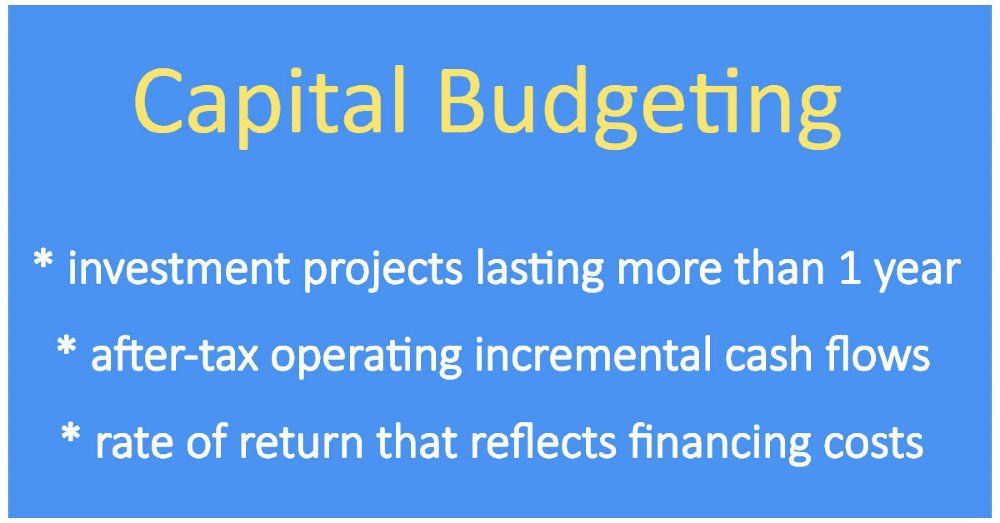Level 1 CFA® Exam:
Capital Allocation:
Definitions, Steps, & Assumptions

In this lesson we are going to explain the process of capital allocation, the steps it involves and its main principles. We are going to say what an investment project is. Additionally, we are going to distinguish between different types of investment projects and introduce a few definitions.
Capital budgeting (aka. capital allocation) is a process carried out by companies in order to make decisions on investment projects lasting more than one year. We call these projects capital investments or capital projects. Capital allocation is a key issue for in-house analysts because potential mistakes made during the allocation process may affect the future of their companies.
Steps in Capital Allocation Process
Capital allocation process can be divided into four steps:
- Step One: Idea generation
- Step Two: Investment analysis
- Step Three: Capital allocation planning
- Step Four: Monitoring and post-auditing
The step called idea generation is the most important part of the allocation (budgeting) process. At this stage ideas for future investment projects are born. These ideas can come from each department of the company but they can also come from the outside.
The next step called investment analysis is about gathering information in order to estimate future cash flows and assess the profitability of individual projects.
The third step, i.e. capital allocation planning, involves choosing profitable projects so that they fit the company's strategy. In a nutshell, at this stage you choose those of the identified profitable projects which are good for your business. Note that even though some projects analyzed individually may be assessed as profitable, if we consider the company as a whole they may be unsuitable.
In the monitoring and post-auditing step, which is the last stage of the allocation process, you compare the actual results of investments with the planned or predicted results and you explain any differences. You could ask: why should I compare actual results with forecasts if I can’t change anything now, anyway. Well, you can’t change anything in relation to that particular project but you can learn lessons for the future. Ex-post audit allows you to monitor the forecasts and analyses that underlie the capital budgeting process and improve company performance. It also allows you to respond if sales or costs are out of line.
So, to sum up, the capital allocation process should consist of four steps. The most important one is the first step when you come up with ideas for investments that are to increase the value of the company.
As a result of the allocation process you choose those investment projects whose implementation will contribute to the ultimate goal of the management which is to increase the value of a company for its owners, e.g. stockholders in the case of a public company.
Categories of Investment Projects
There are different classifications of projects. One such classification would be as follows:
- replacement projects,
- expansion projects,
- new products and services,
- regulatory, safety, and environmental projects,
- high-risk projects that are not a subject to traditional evaluation methods such as the net present value OR the so-called pet projects.
(...)
Capital Allocation – More Definitions
Before we get to the main principles of capital allocation, let’s define the following concepts:
- a sunk cost,
- opportunity costs,
- an incremental cash flow,
- externalities,
- conventional and nonconventional projects.
A sunk cost is the cost that has been incurred and can’t be changed. Today’s decisions shouldn’t be based on costs incurred earlier, i.e. sunk costs.
An opportunity cost is an incurred cost and a result of a particular choice. It shows you the benefit that would be achieved if you chose a different solution. If you replace an old machine with a new one, an opportunity cost is (i) a cash flow generated by the machine which you got rid of, and (ii) any possible profits from the investment of additional money dedicated for the purchase of a new machine. Remember that when you analyze an opportunity cost, you should always take into consideration market values.
An incremental cash flow is equal to the difference between the cash flow if we undertake the project and the cash flow if we don’t undertake the project.
Externalities are factors that influence an investment and which are not directly related to the project. They can be both positive and negative, and they can come from the same company or from the outside. One example of externality can be cannibalization, a situation in which the benefits of the investment project adversely affect revenues from other activities of the company.
A conventional cash flow pattern is one with an initial outflow followed by a series of inflows. In the case of nonconventional cash flow patterns, outflows appear more than once and are interwoven with inflows. Obviously, it’s easier to analyze and evaluate projects with conventional cash flow patterns. In general, computation problems on level 1 exam will cover such projects, which doesn’t mean that you shouldn’t know what the nonconventional projects are.
We can distinguish several universal principles on which the evaluation of capital projects is based. These assumptions apply to cash flows and the discount rate. When taking your level 1 CFA exam remember:
In order to evaluate investment projects, you use after-tax operating cash flows which you place at certain moments in time and you discount them at the interest rate which takes into account capital costs and financing costs.
If you wanted to develop this further, you should remember that:
(...)
Mutually Exclusive Projects, Project Sequencing, Capital Availability: Impact on Investment Projects Analysis
star content check off when doneFinally, we are going to introduce one more division of investment projects and discuss project sequencing and the availability of capital.
According to an independence criterion, projects can be divided into:
- independent projects, and
- mutually exclusive projects
In the case of independent projects, cash flows of individual projects aren’t dependent on each other and projects can be carried out simultaneously. When it comes to mutually exclusive projects, it isn’t possible to simultaneously carry out different projects. You have to choose one of them or reject all.
Project sequencing is when many projects are sequenced through time so it is possible to invest in them at different times. Therefore you might invest in a project today and after some time invest in another project if the financial results of the first project are desirable.
If a company has unlimited funds it can carry out all the projects that provide the required rate of return. In the case of limited funds and capital rationing, the company should choose those projects that maximize company value.
The presence of mutually exclusive projects, project sequencing and capital rationing makes a good capital allocation process difficult.
- Capital allocation is a process carried out to make decisions on investment projects lasting over a year.
- Capital budgeting (allocation) can be divided into four steps: idea generation, investment analysis, capital allocation planning, and monitoring and post-auditing.
- As a result of the capital allocation process you choose those investment projects whose implementation will contribute to the ultimate goal of the management which is to increase the value of a company for its owners, e.g. stockholders in the case of a public company.
- Today’s decisions shouldn’t be based on costs incurred earlier, i.e. sunk costs.
- Cannibalization is a situation in which the benefits of the investment project adversely affect revenues from other activities of the company.
- In order to evaluate investment projects, you use after-tax operating cash flows which you place at certain moments in time and you discount them at the interest rate which takes into account capital costs and financing costs.


